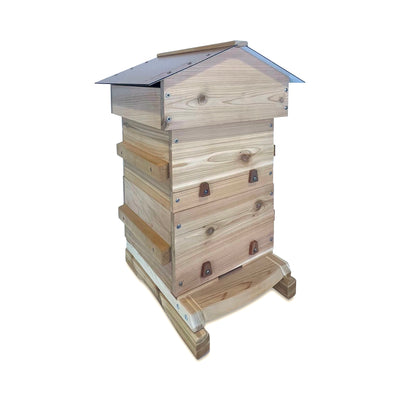Difference Between Bumble Bees, Hornets, Wasps and More!
Each year we receive hundreds of calls from homeowners with "bees" that they'd like removed. Often they are, indeed, honey bees. At least 1/3 of the time, however, they are bumble bees, hornets, wasps or yellow jackets (a type of wasp). I'm not aware of any wasp/hornet removal services other than extermination. There are some who remove bumble bees, but usually I recommend to customers that they just leave them until winter, as they will die out.
Few people realize that there are upwards of 20,000 types of bees in the world, and more than 4,000 in North America alone. This doesn't even include hornets or wasps! Do note that all hornets are technically wasps...
Yesterday we received an e-mail from someone with what they thought was a bee's nest hanging from their eave. This should be the first indication that it is NOT honey bees, as they tend to live inside cavities as opposed to in exposed nests.
Here's a picture of the wasp/hornet's nest:

Yellow jackets are a type of wasp that often lives in the ground. This is the most common call we receive, and the first question I ask is, "Where is the nest?" If it's in the ground I assure them it's not honey bees, but likely yellow jackets! Yellow jackets, like bumble bees, die out over the winter in northern states. So if they are out of the way and not bothering you or your family, you can leave them alone until winter and then plug up the hole.
Bumble bees come in a tremendous array of shapes, sizes and colors. They usually live in the ground or in some other small cavity such as a bird house or mailbox. Most of the time they are very docile, with little interest in humans, though like any stinging insect they can be aggressive if provoked.
Here's an example of a sparrow house being used as a bumble bee nest:

Honey bees prefer to live in elevated (as opposed to in the ground) cavities such as walls, chimneys or trees. They tend to be very docile even if you are standing directly in front of their hive.
If you've got some "bees" you'd like removed, please make sure that they aren't wasps/hornets or bumble bees. If they are honey bees we will do our best to help you out!






Leave a comment